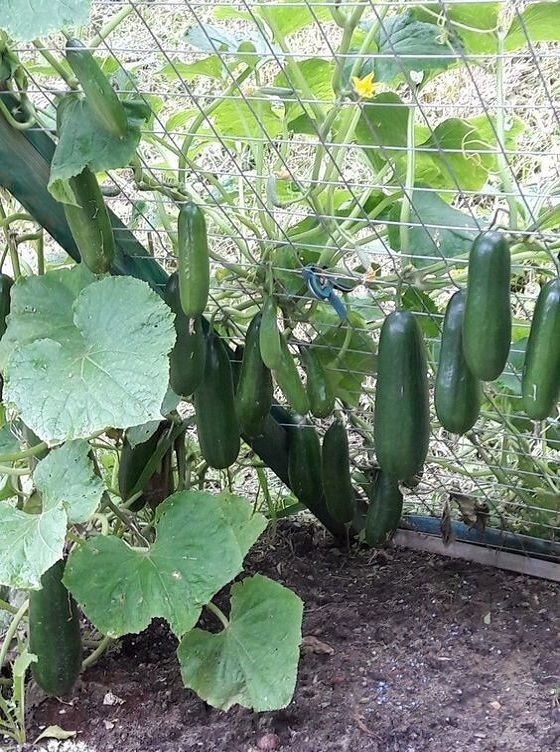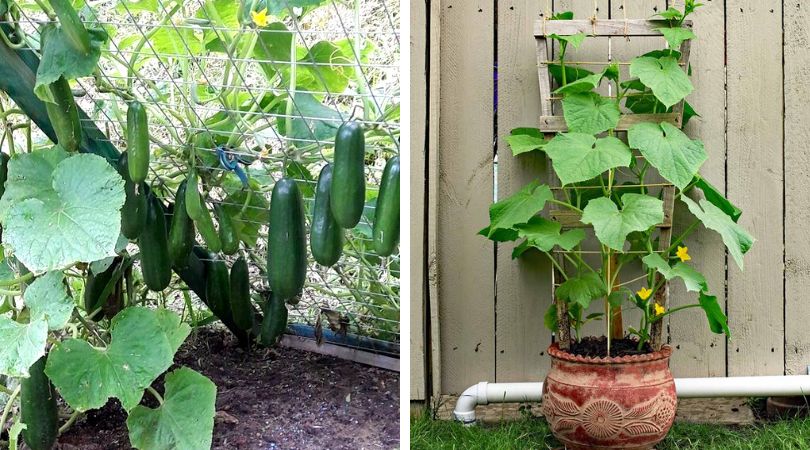Would you consider yourself an ambitious landscaper? Perhaps this spring you tried to plant a bit too much in your garden since you wanted to have a full kitchen garden. It’s a constant challenge for us. Our ambitions exceed the size of our backyard. But there’s a way to make more room in the garden, so you can grow all seven kinds of peppers or herbs. Even if you only have a few pots to work with, you can still grow cucumbers vertically! Learn the secret to maturing these summertime staples!
So, what exactly is vertical gardening?
To get a feel for vertical gardening, learning how to grow cucumbers vertically is a simple experiment. Tomatoes, peas, and pole beans are also simple to cultivate (indeterminate types). It’s not just zucchini; we’ve seen other gardeners harvest watermelons, cantaloupes, and even a variety of melons.
Keeping these vegetables above the ground not only conserves valuable floor space, but also protects them from rot caused by contact with wet soil. The fact that you don’t have to bend over is also quite convenient. With vertical gardening, you can harvest beans and cucumbers while standing up. And you can grow all of these vertical vegetables in pots too!
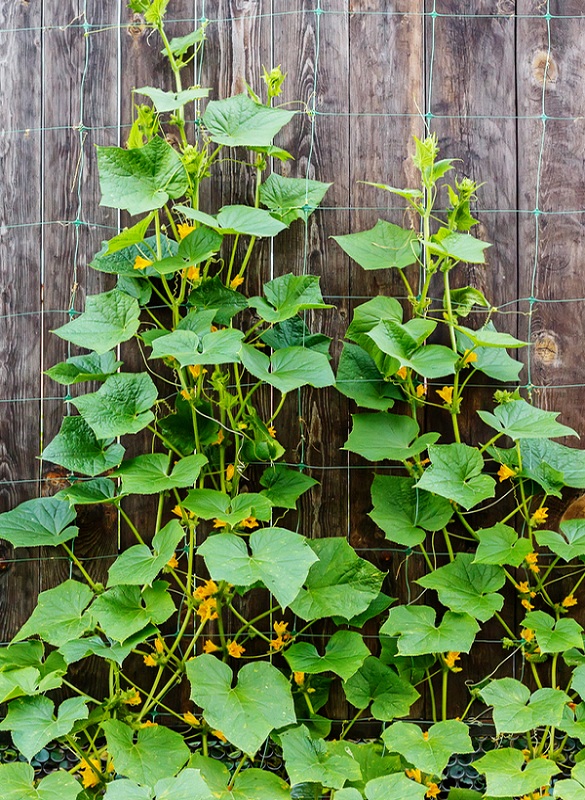
Grow Cucumbers Vertically
So, if this is your first time trying vertical gardening, or if you’ve just never grown cucumbers before, don’t worry; we’ve got you covered. Non-bush cucumbers are designed to grip with their small tendrils. It is amazing to see a plant grip the nearest fixed item and slowly draw itself toward it.
One or two cucumber plants (non-bush kind) or seeds are all you need to start a vertical cucumber garden. In the open, cucumber seeds germinate quickly and flourish. As a suggestion, you can find a fantastic selection of cucumber seeds at Southern Exposure Seed Exchange. The cucumbers will also need a support system to climb. The metal trellis we’ve had for years serves this purpose, but a fence, tomato cage, or teepee would do just as well.
If necessary, place your support system in the ground first. (Obviously, you may omit this if you’re utilizing a properly installed trellis or fence.) Make sure there is enough structural support for a trellis of that height or higher.
Plant cucumbers near the base of your support structure. Allow for the growth of plants or seeds for several weeks. Even if you buy a very tall variety of plant in a nursery, chances are it still won’t be tall enough to climb a trellis or support right away. As soon as the cucumber plants send out their tendrils, you can start training them to grow upward.
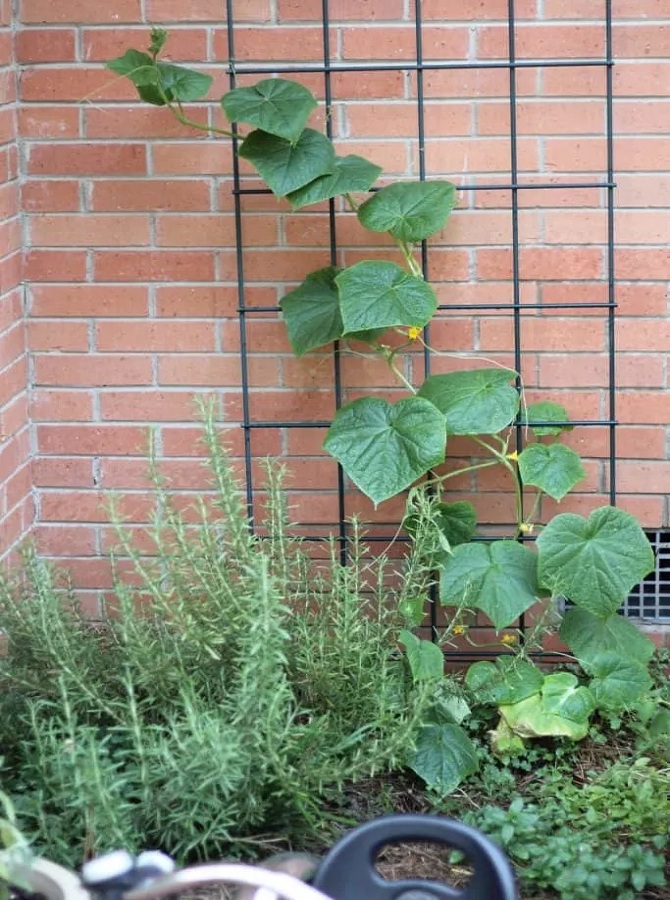
Training Cucumbers on a Trellis
Including toilet training, vertically training cucumbers is the easiest training you’ll ever do. Vining plants like cucumbers, by nature, will seek out and attach to whatever is nearby. Make sure to keep an eye out in the neighboring plant as well. When your plants reach the appropriate height, you should carefully start arranging them along the trellis.
In order to get the plant to stay and start climbing up naturally, you may need to manually wrap a tendril around the trellis or prop it up with a leaf tucked under the trellis.
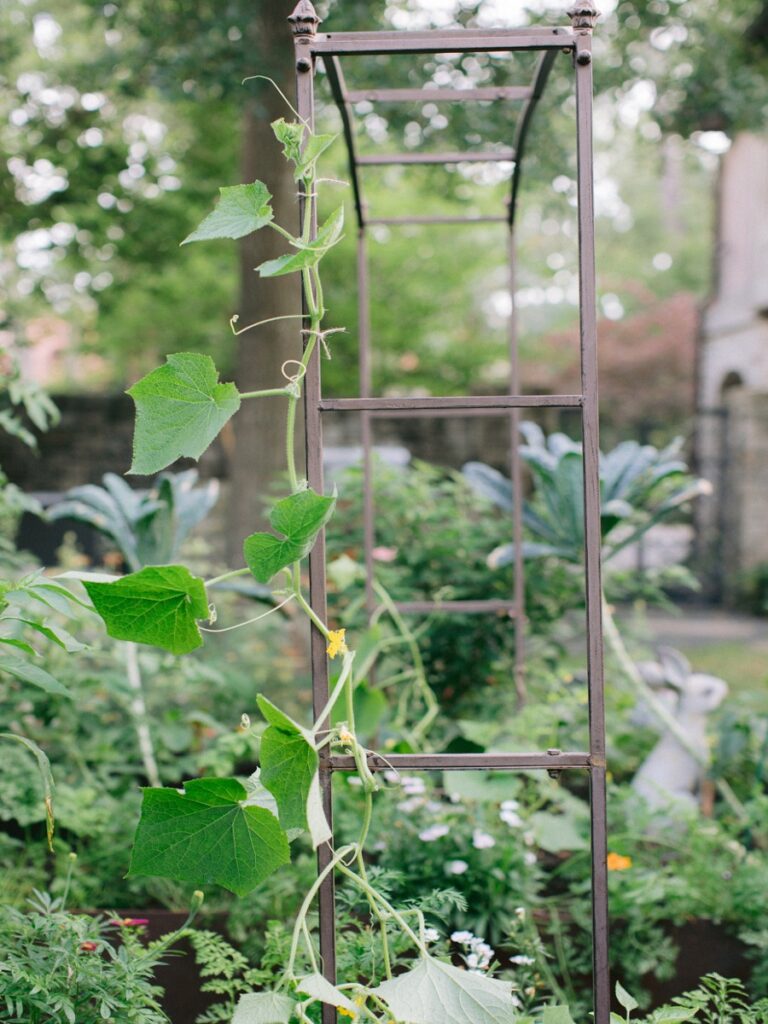
Harvesting Cucumbers
The cucumber will slowly start to ascend. After the fruit sets, the cucumbers will droop. This makes it very simple to spot and select them. Our cucumbers only need us to peek under the trellis to see that they are ready and waiting. To get the most out of your growing space, train your cucumber plants to grow along a fence or other low barrier.
